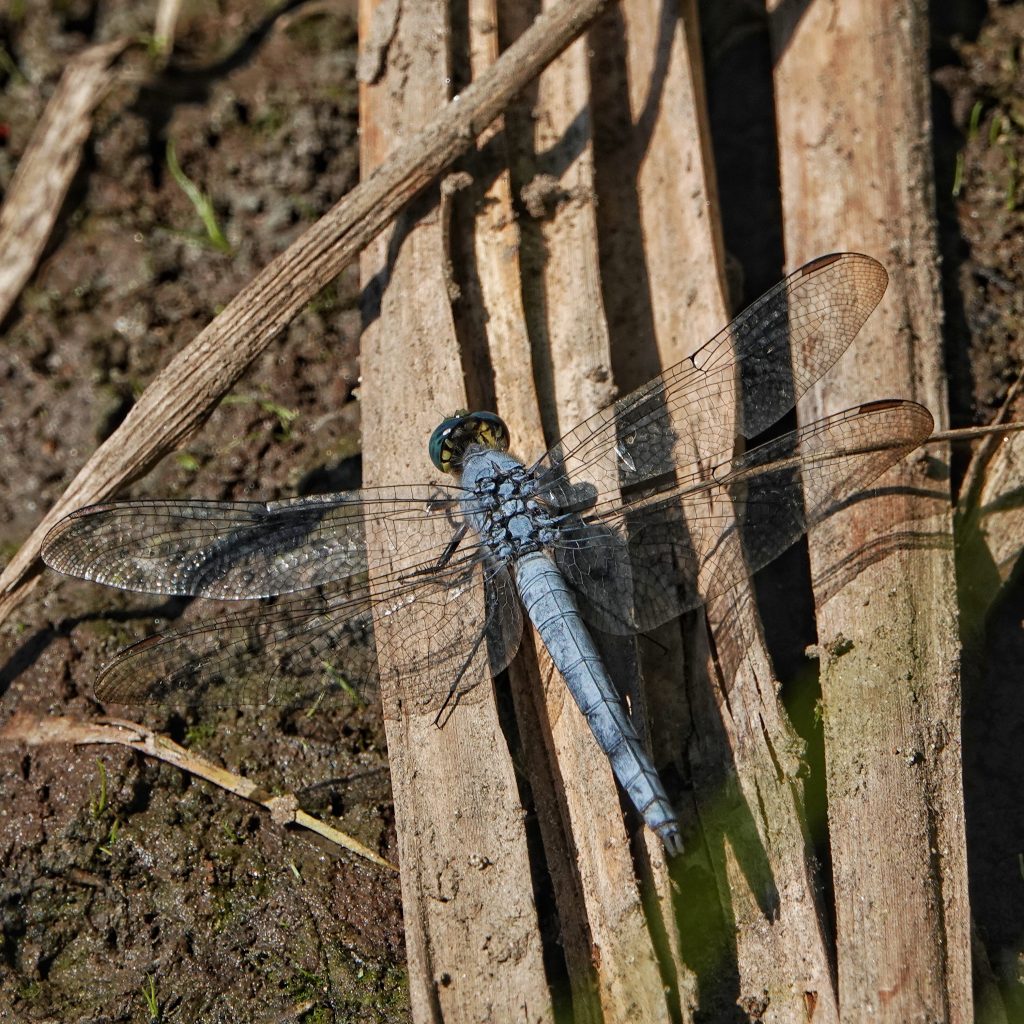
Because these small skimmers (family Libellulidae) often fly together, and look similar, I am posting linked, back to back profiles of Western Pondhawks and Blue Dashers. Western Pondhawks (Erythemis collocata) frequently perch on the ground, unlike Blue Dashers (Pachydiplax longipennis), which are our only other species of small dragonflies with pruinose blue males and green females, who usually perch on vegetation and other structures.
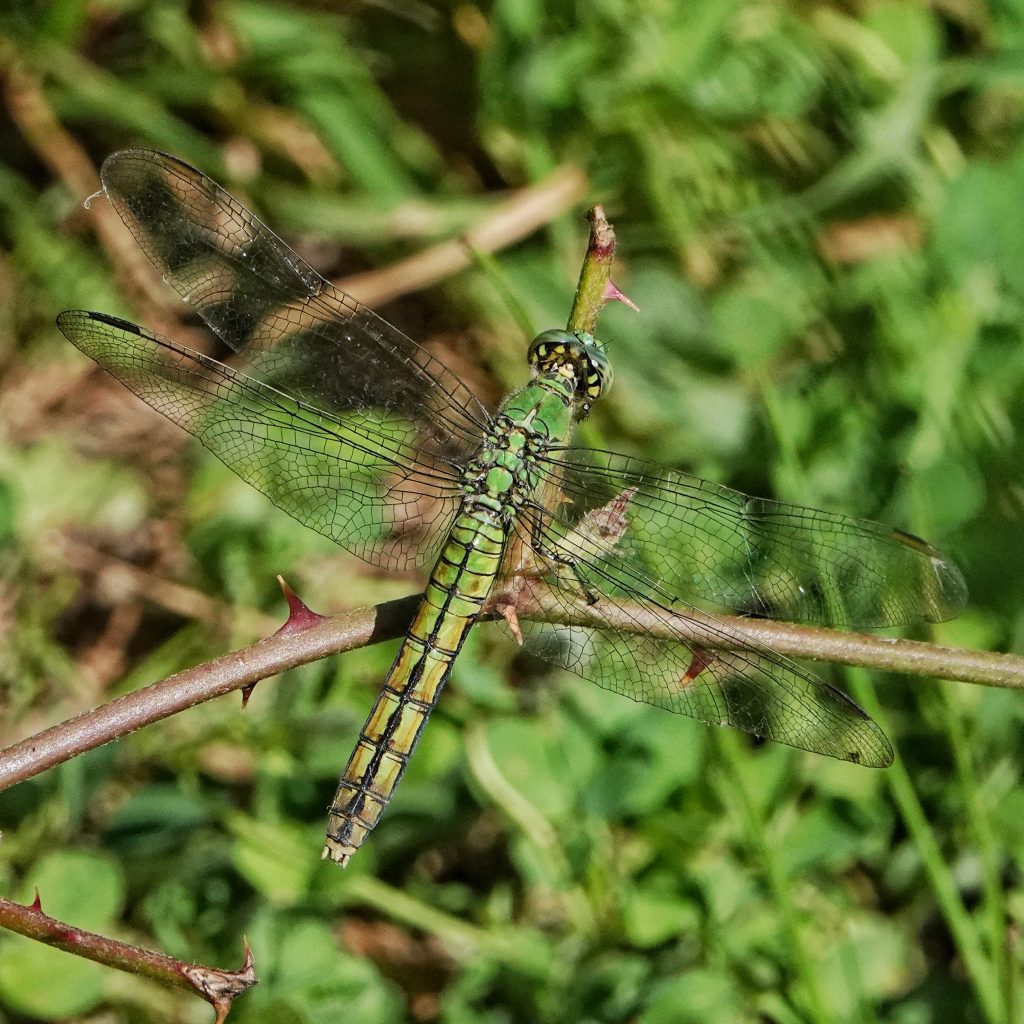
They are fairly easy to differentiate in hand because Western Pondhawks have a green face and unmarked thorax, as opposed to the white face and green striped black thorax of Blue Dashers (and male Blue Dashers usually have very dark final segment of the abdomen, which Western Pondhawks lack, although both this and the thorax markings may be obscured in extremely pruinose Blue Dashers), although it’s not always so easy to see these details from 10’ away. Females and immatures of each species are quite easy to differentiate because the abdomen of Blue Dashers is mostly black with 4 rows of green dashes, and that of Western Pondhawks is predominantly green with a black line running up the center.
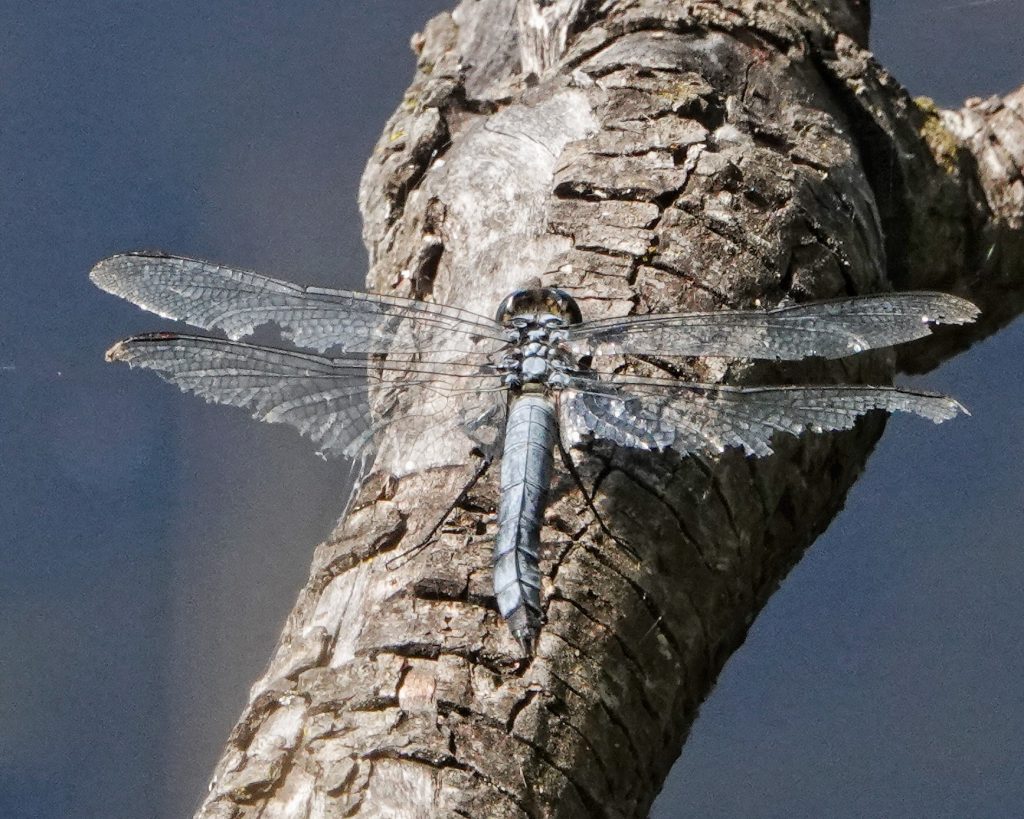
Another helpful tip, especially in photos where the dragonfly is facing away, and/or you’re trying to rule out a Blue Dasher male that is completely pruinose, is to look at wing venation. This probably won’t be visible with the naked eye, unless you have the bug in hand, and may not be visible even through binoculars, but with a good, crisp, well cropped photo, you may be able to note that in Western Pondhawks there is at least one and usually 2 crossveins behind the forewing stigma, and 6-8 (depending on where you start counting) cells before you get to the next extended clear area, while the Blue Dasher has a clear area to the rear of the forewing stigma that is longer than the stigma, and/or that from that clear area toward the base there are only 3 or 4 cells before there is another long, clear space.
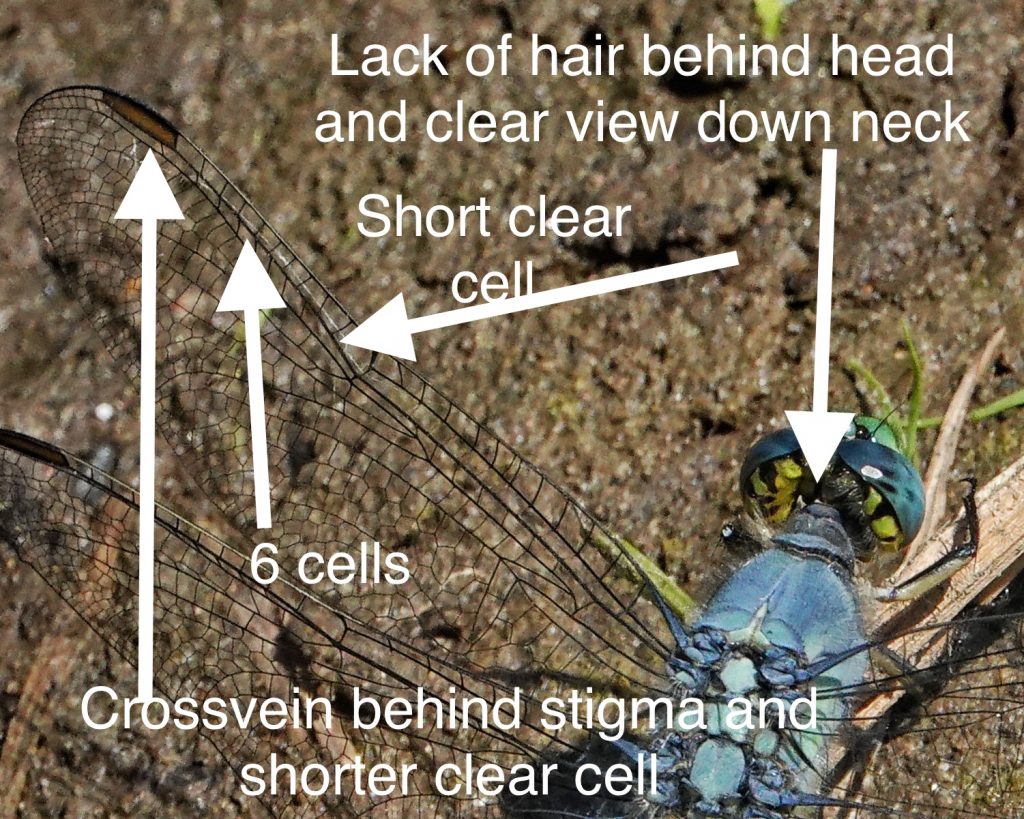
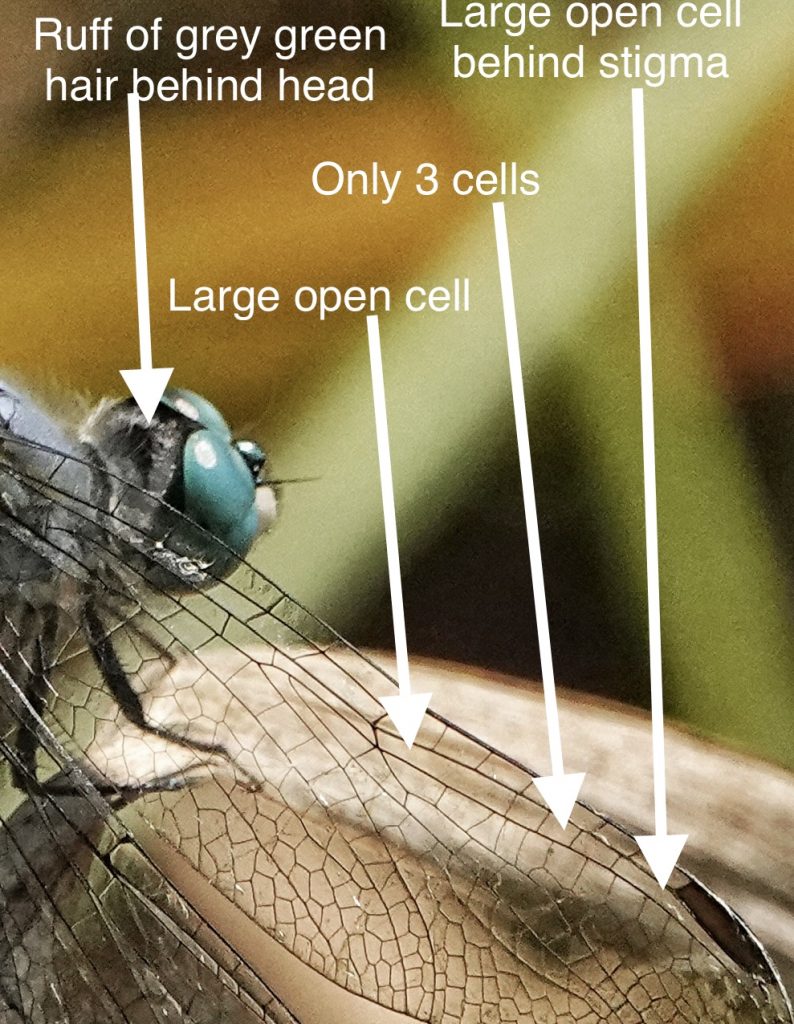
Yet another identification trait, and one which I’ve resorted to in trying to identify my own less than crisp photos of wing venation (although I must admit that I’ve never seen anyone else mention this), is that Western Pondhawks offer a clear view up the neck into the back of the head, while Blue Dashers have a ruff of grey green fur that obscures that area.
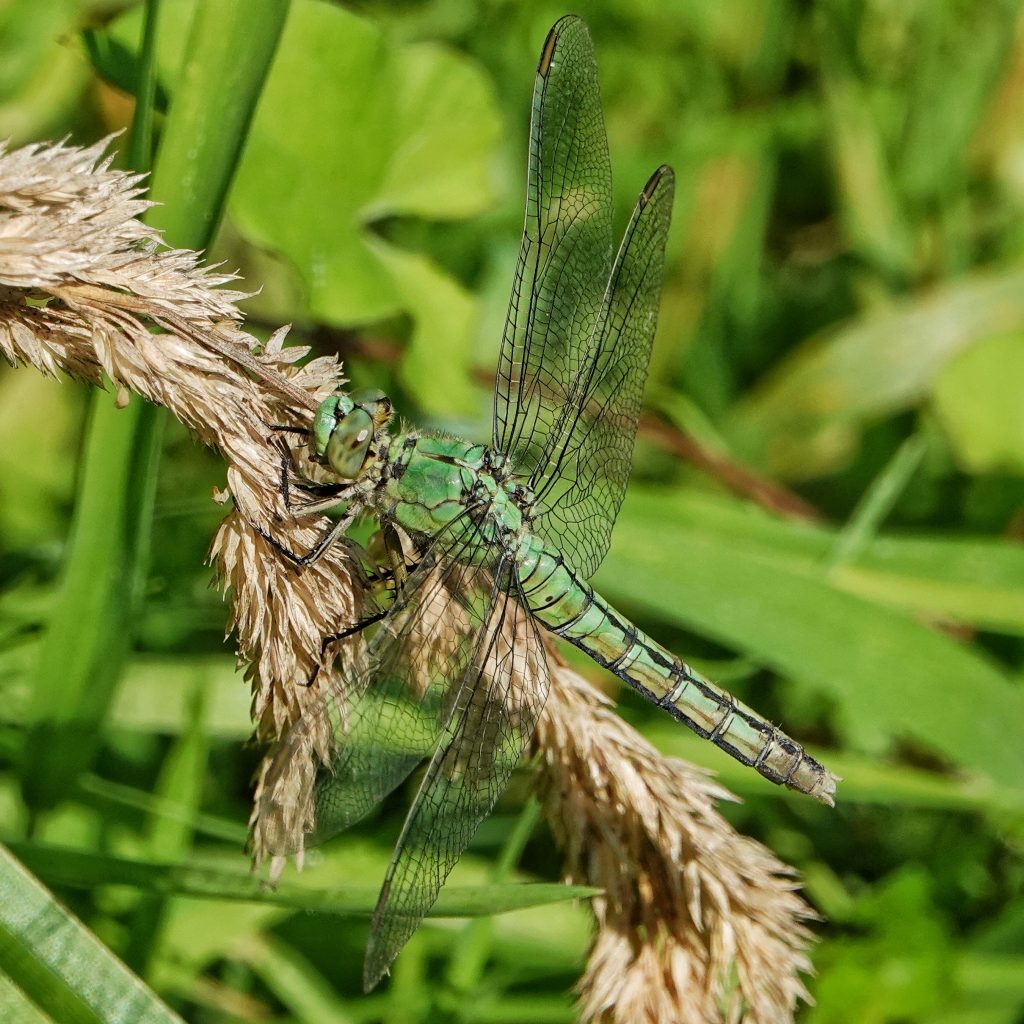
Unlike Blue Dashers, Erythemis in general usually perch with wings flat, and seldom obelisk (point the abdomen toward the sun to cut down on exposed surface area). Dennis Paulson, in his outstanding ‘Dragonflies and Damselflies of the West’ (2009) hypothesizes that their ground perching habit aids in capture of larger prey (for which they are also adapted evolutionarily by having very large spines on the hind femur), since it is also seen in many clubtails (family Gomphidae) which also tend to target larger prey.
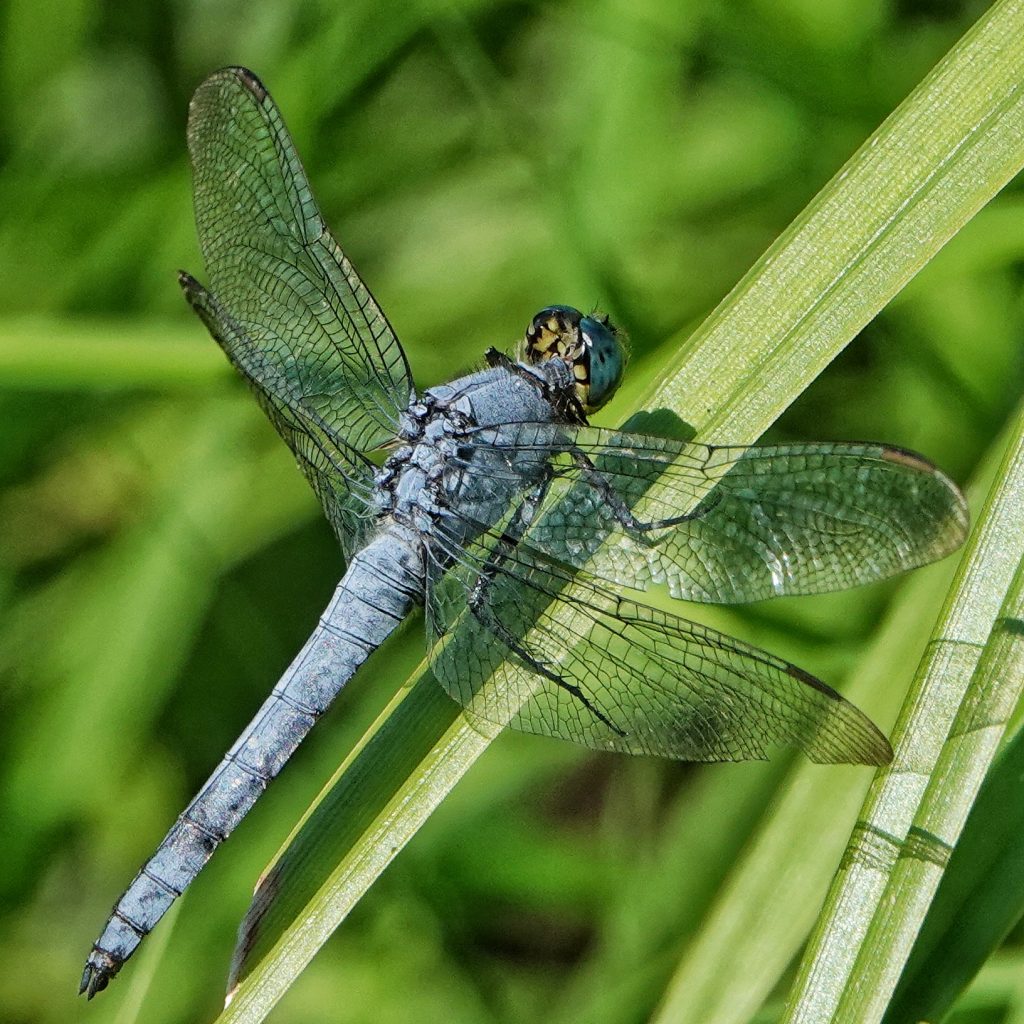
Males usually patrol low over the water, while females often hang out in weeds and grass nearby. Mating is brief (20-30 seconds), usually at rest, followed by another brief (10-20 seconds) rest period by the female before she begins ovipositing. Males guard the female during ovipositing, circling her rather than hovering. Females oviposit into open water near vegetation or into mats of algae, tapping irregularly or several times in one spot, and then moving on.
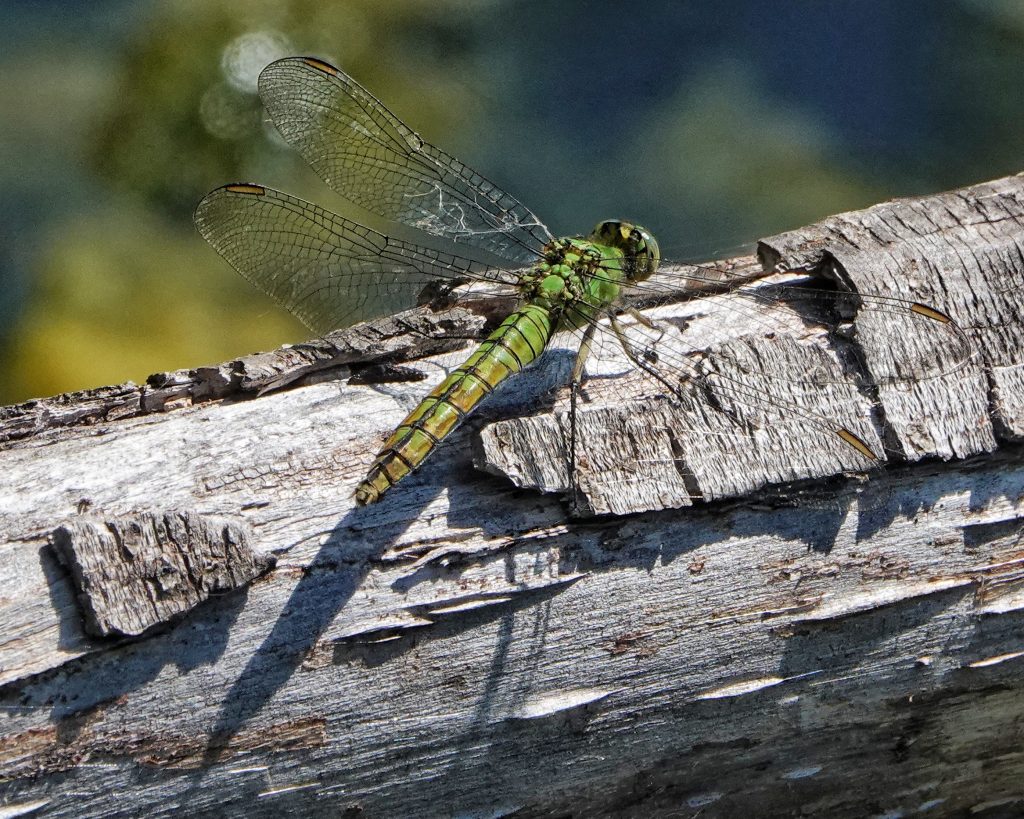
Because of their many similarities, and the fact that they freely hybridize where their ranges overlap, it has been proposed by many respected odonatologists that Western and Eastern Pondhawks (Erythemis simplicicollis) be synonomized under the name E. simplicicollis, relegating E. collocata to subspecies status. But Rodriguez et al. (2015) found significant differences between the two, the most noticeable one being that the abdominal appendages of our E. collocata are black, whereas those of E. simplicicollis are white. For now they remain classified as separate species, but there are still those broad zones of hybridization, and I don’t think the molecular biology folks have weighed in yet.
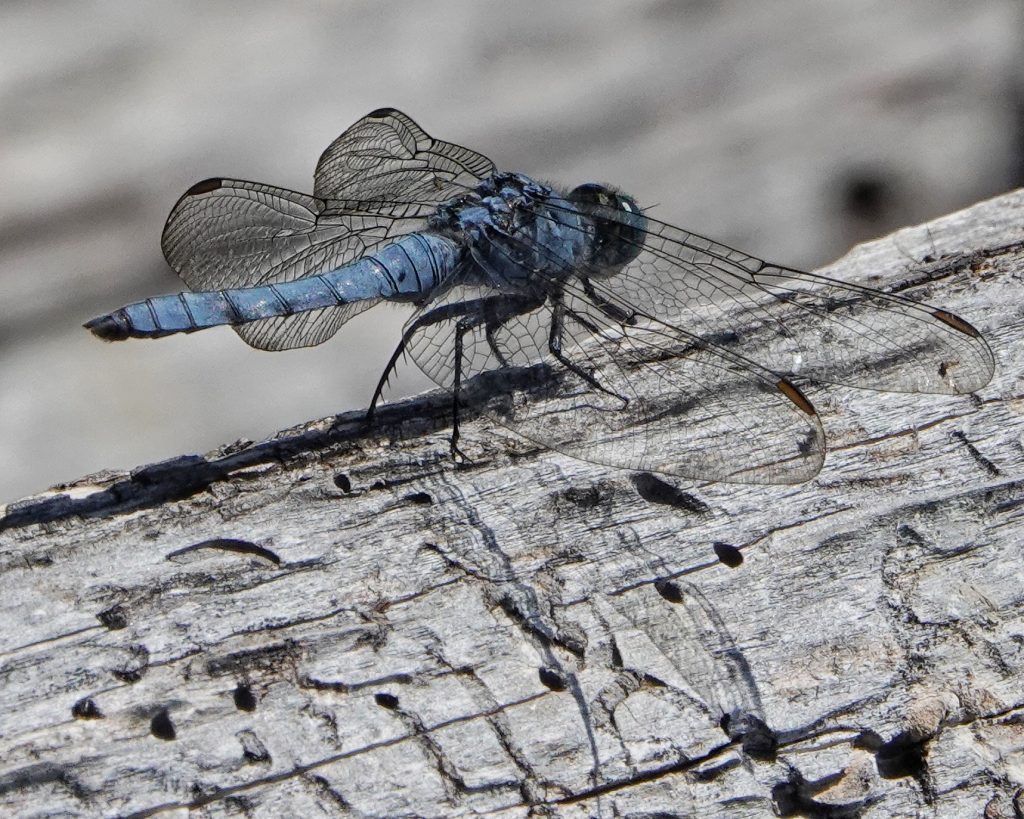
Description-Medium sized (total length 40-42mm, wingspan 63-68mm) dragonfly with clear wings, a green face, dark blue green eyes, 1-2 crossveins behind the forewing stigma, and 6-8 cells between that area and the next extended clear area; lack thick ruff of hairs behind the head, leaving it exposed; males are pruinose, blue, with an unmarked thorax, and blue pruinosity to the tip of the abdomen; females and immatures are mostly green, with an unmarked thorax, and a single black line running down the center of the abdomen.
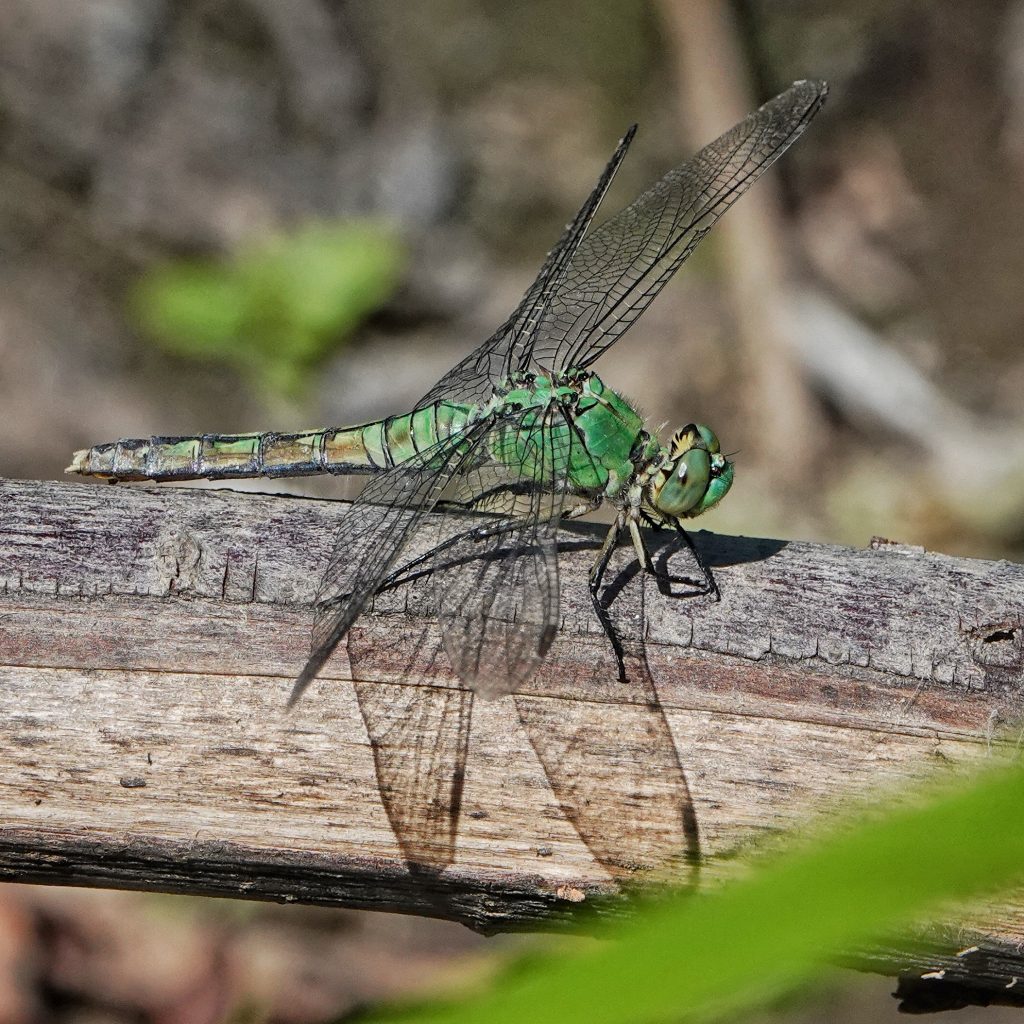
Similar species-Blue Dashers are medium sized (total length 28-45mm, wingspan 60-80mm) dragonflies with a white face, grey green eyes, an area behind the forewing stigma that is free of crossveins and is longer than the stigma, with only 3-4 cells before the next long clear area; often has amber to brown flush near the base of the wings; has a grey green ruff of hair obscuring the back of the head; males are pruinose, blue, usually have a black thorax with green stripes, and the last segment of the abdomen is dark, although both of these traits may be obscured by extreme pruinosity; females and immatures are black and green, with green stripes on the thorax, and 4 rows of green dashes on the abdomen.

Habitat-Ponds, lakes, marshes, swamps, ditches, and very slow streams, with abundant aquatic vegetation, usually in open areas; often near hot springs in montane or northern interior locations; may be found up to 4,900’ elevation in se Oregon, but most common below 1,000’ elevation;not usually found long distances from water.
Range-Central America and western North America; region wide in appropriate habitat.
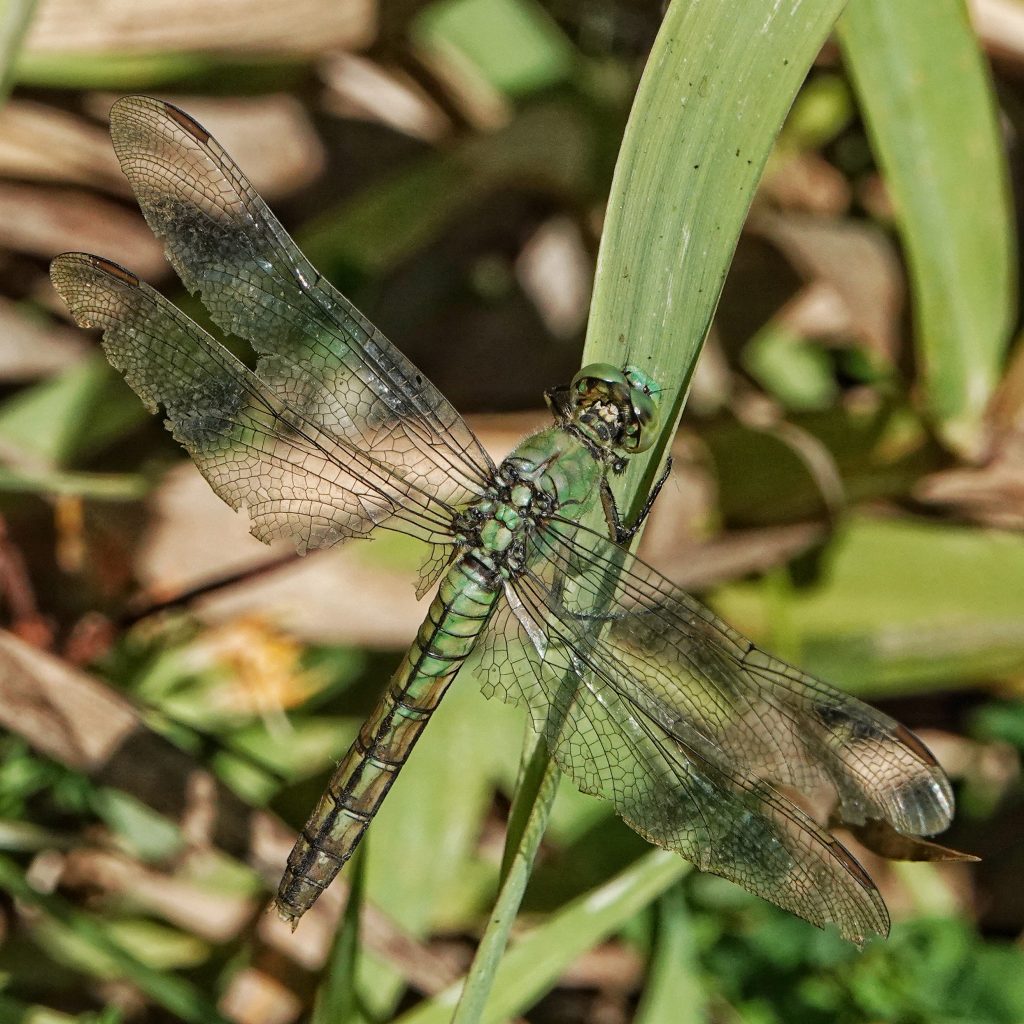
Eats-Nymphs are ambush predators from detritus and aquatic vegetation and feed on aquatic Diptera larvae (including mosquitoes), mayflies, freshwater crustaceans, nymphs of aquatic Hemiptera, small fish and tadpoles, freshwater worms, and nymphs of damselflies and dragonflies, including their own species; adults launch from low horizontal perches and go after relatively large, flying, soft bodied prey like flies, mayflies, caddisflies, flying ants and termites, Lepidoptera, and similar sized or smaller dragonflies and damselflies.
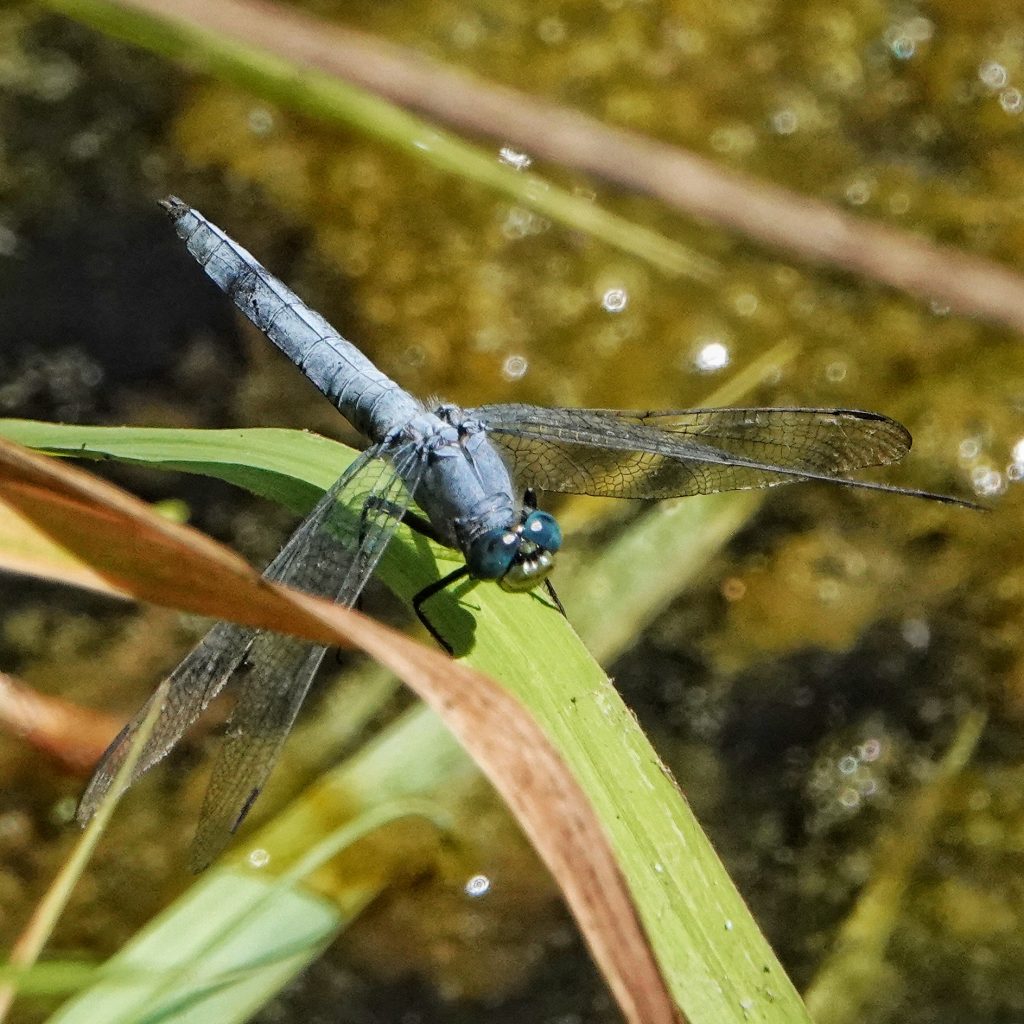
Eaten by-Presumably insectivores of all classes that can catch and subdue them; my guess would be that larger dragonflies, fish, amphibians, and birds would be the primary predators of adults, and that fish, predatory aquatic invertebrates, and waterfowl, etc., would most often prey on the nymphs.
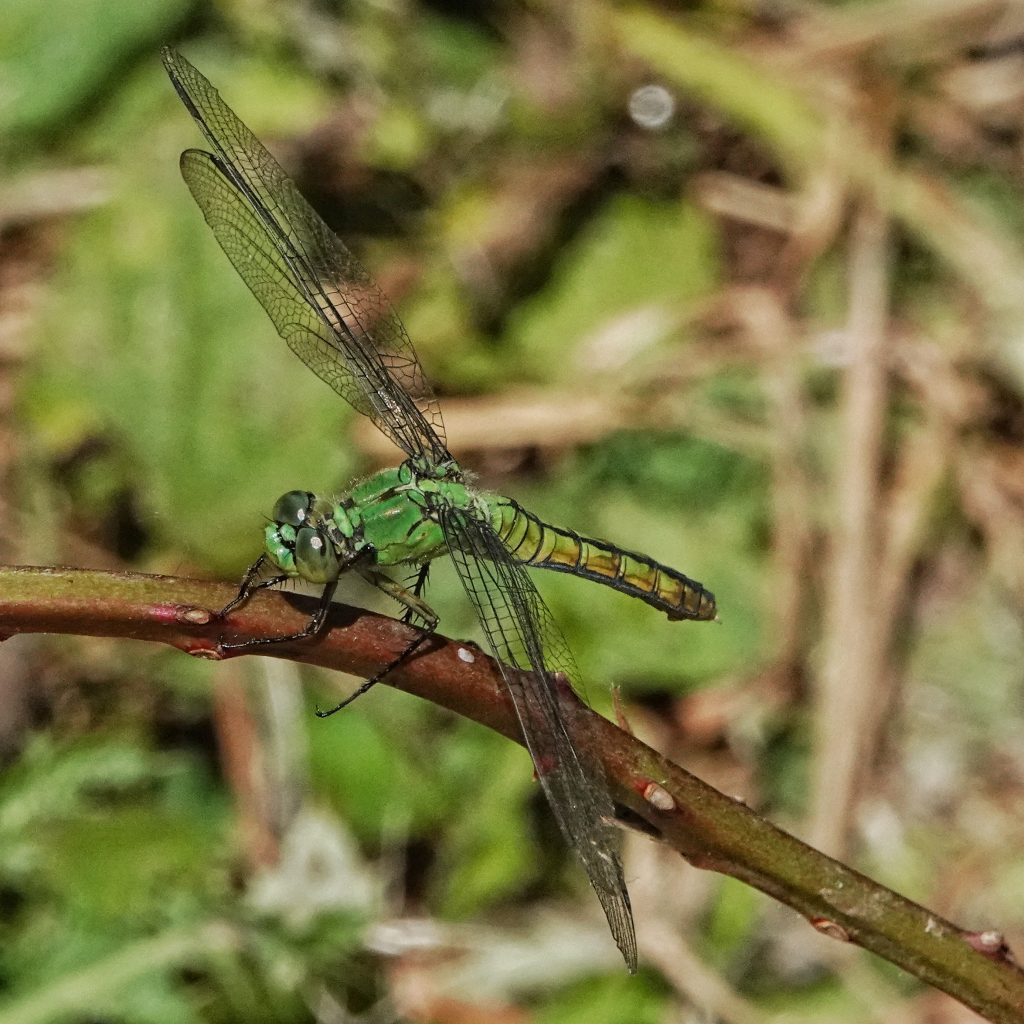
Adults active-May to October
Life cycle-Univoltine or bivoltine depending on the length of the season; nymphs climb and hide in detritus and vegetation, including filamentous algae; overwinter as nymphs.
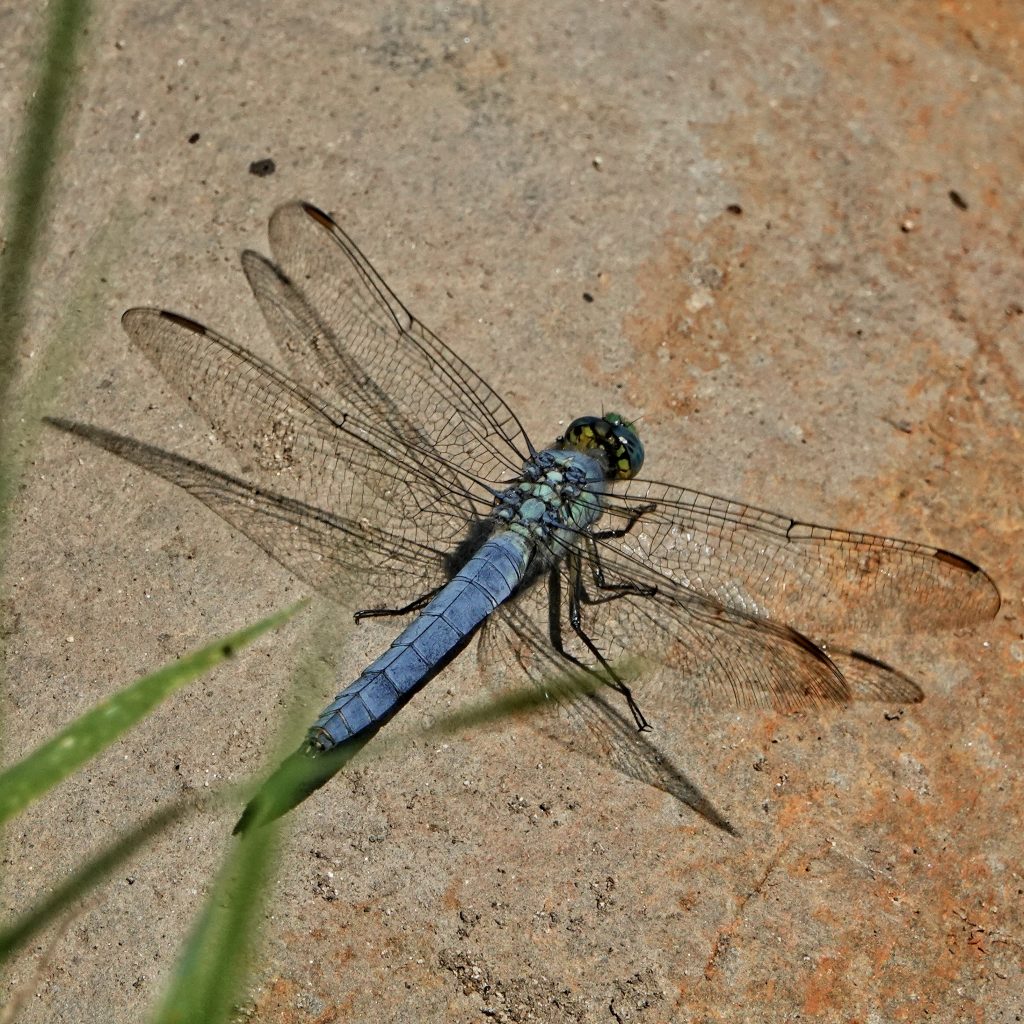
Etymology of names–Erythemis is from the Greek words for ‘red’ and ‘what has been established’. I would guess that the genus was erected by Hagen based on the red members of the pondhawks, and that he was saying ‘and I say it’s so!’ The specific epithet collocata would appear to be from the Greek words for ‘glued down’, and probably refers to the way this species often perches flat on level ground.
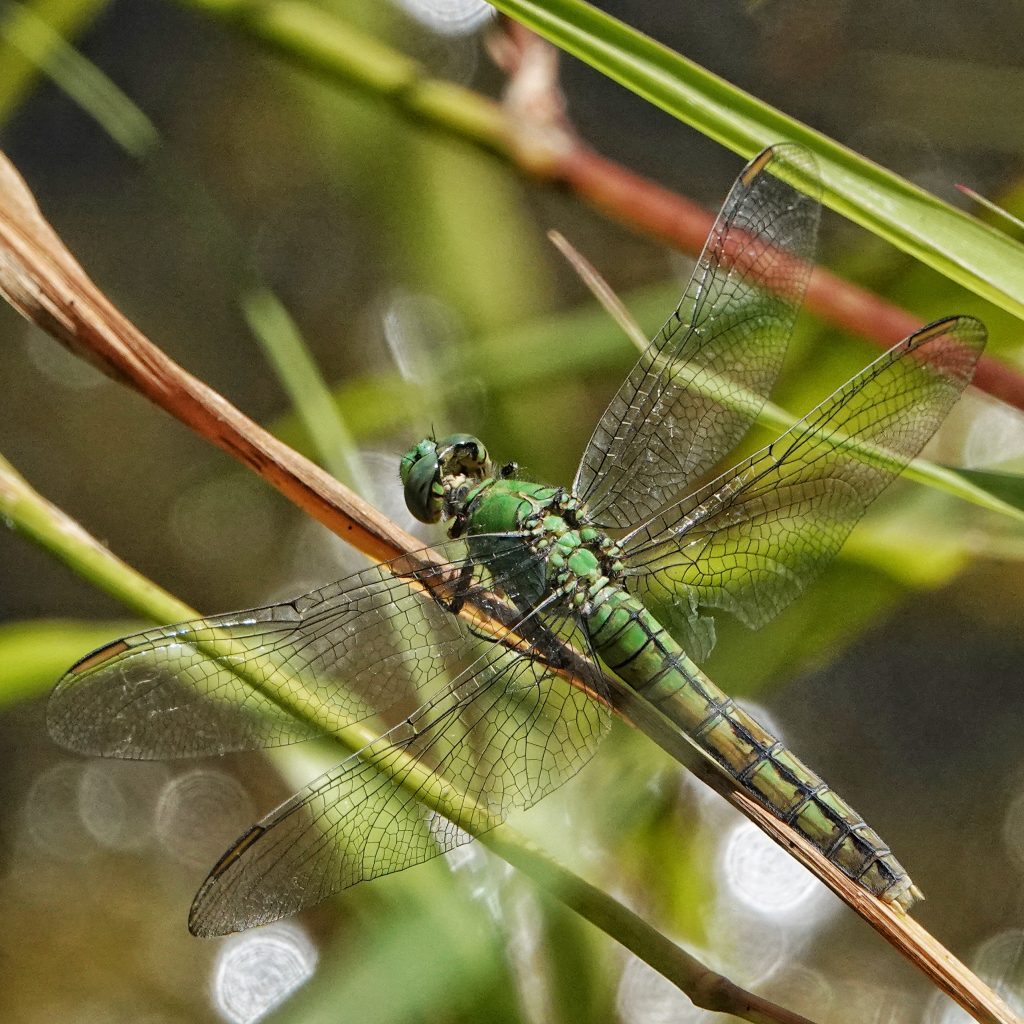
Species Erythemis collocata – Western Pondhawk – BugGuide.Net
https://fieldguide.mt.gov/speciesDetail.aspx?elcode=IIODO39020
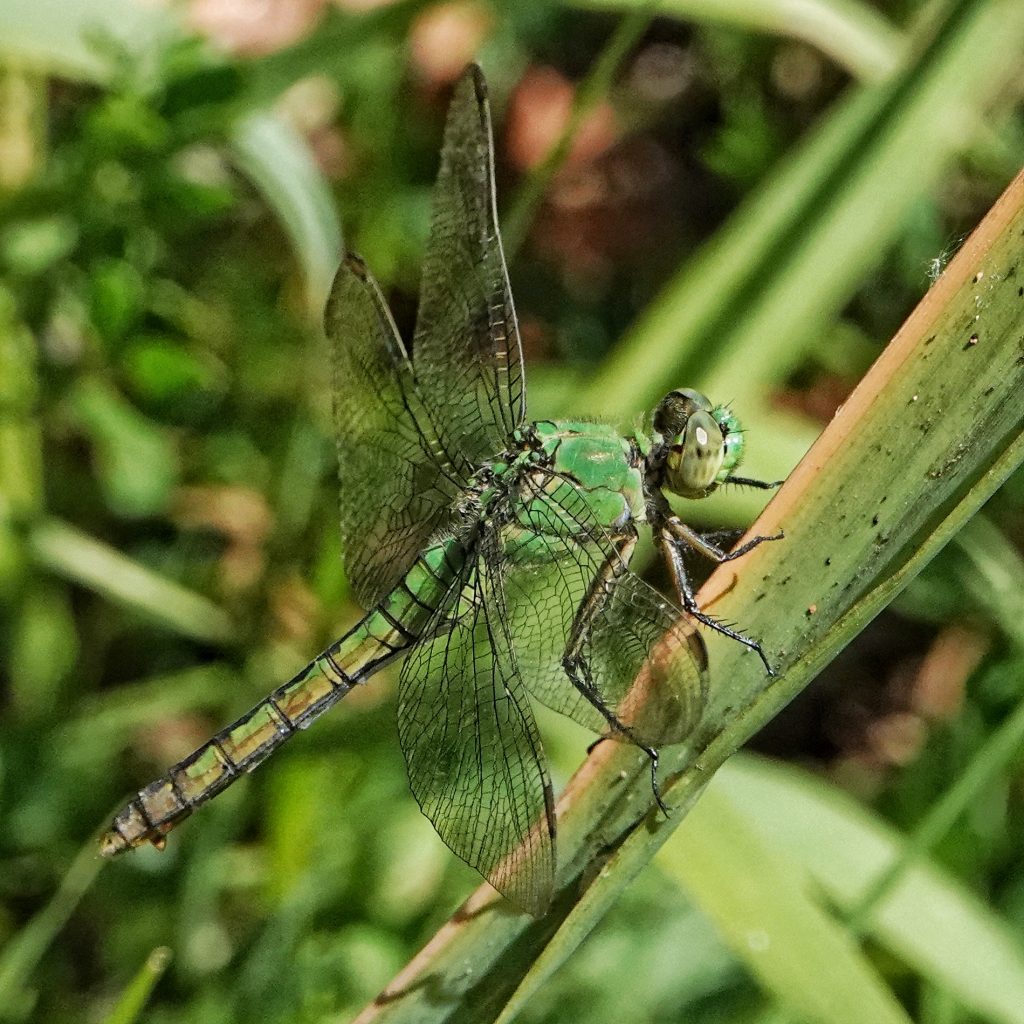
1 thought on “Erythemis collocata (Western Pondhawks)”